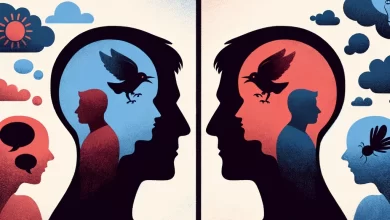Understanding Your Attachment Style 101

Did you know that your attachment style has a significant impact on your relationships? Attachment styles, as described by attachment theory, determine how we show up in relationships and influence our behavior, thoughts, and emotions towards others and ourselves. Whether you have a secure attachment, insecure attachment, or disorganized attachment, understanding your attachment style can provide valuable insights into your relationships and their effects.
Key Takeaways:
- Attachment styles play a crucial role in our relationships and impact our behavior and emotions towards others.
- Secure attachment, insecure attachment, and disorganized attachment are the main types of attachment styles.
- Understanding your attachment style can provide valuable insights into your relationships.
- Attachment styles are not fixed and can be influenced by experiences and relationships.
- Therapy can help develop a secure attachment and navigate the challenges of insecure attachment.
What are Attachment Styles and How Do They Impact Relationships?
Attachment styles play a significant role in our relationships, influencing how we connect, communicate, and relate to others. These styles are not fixed and can vary across different relationships, as they are influenced by the specific context and dynamics of the relationship.
There are several attachment styles identified by attachment theory, each with its own characteristics and impacts on relationships:
- Preoccupied attachment
- Fearful avoidant attachment
- Dismissing avoidant attachment
- Secure attachment
- Disorganized attachment
Each attachment style manifests unique behaviors and emotions in relationships, which can have both positive and negative impacts on the dynamics between individuals.
Attachment styles play a crucial role in shaping our relationships, but how exactly do they impact our connections with others?
The impact of attachment styles on relationships can be seen in various aspects:
- Communication patterns
- Emotional intimacy
- Conflict resolution
- Trust and security
- Expectations and needs
For example, individuals with a secure attachment style tend to have healthier communication patterns, higher levels of trust, and a greater sense of security in their relationships. On the other hand, individuals with insecure attachment styles may struggle with issues such as jealousy, possessiveness, fear of engulfment, or difficulty in opening up emotionally.
Understanding the impacts of different attachment styles can provide valuable insights into relationship dynamics and help individuals navigate their connections more effectively.
“Attachment styles have a profound influence on how we feel and behave in relationships. They shape our expectations, the stability of our bonds, and our emotional well-being.”
By recognizing and understanding our own attachment style and that of our partners, we can work towards building healthier and more fulfilling relationships. Therapy and self-reflection can be helpful tools in overcoming the challenges associated with insecure attachment styles and cultivating secure and thriving connections.
| Attachment Style | Characteristics | Impacts on Relationships |
|---|---|---|
| Preoccupied Attachment | High anxiety, low avoidance | Over-reliance on partner validation, emotional volatility |
| Fearful Avoidant Attachment | High anxiety, high avoidance | Fear of intimacy, difficulty trusting, push-pull dynamics |
| Dismissing Avoidant Attachment | Low anxiety, high avoidance | Emotional distancing, fear of dependency, reluctance to commit |
| Secure Attachment | Low anxiety, low avoidance | Effective communication, trust, emotional closeness |
| Disorganized Attachment | Extreme overwhelm, inconsistent behavior | Confusion, unpredictable reactions, difficulty forming stable relationships |
Preoccupied Attachment: Characteristics and Behaviors
Preoccupied attachment is a common attachment style characterized by high anxiety and low avoidance. Individuals with preoccupied attachment tend to experience intense emotions and a constant need for validation in their relationships.
Preoccupied attachment can often be traced back to early childhood experiences, such as inconsistent caregiving or parental figures who were emotionally unavailable. These experiences may create a sense of insecurity and a fear of rejection, leading to a heightened sense of anxiety in adult relationships.
People with preoccupied attachment often display high anxiety in their relationships. They may constantly worry about their partner’s feelings and behaviors, interpreting even minor signs of dissatisfaction as a personal reflection of their worth. This hypervigilance can result in overanalyzing situations, seeking reassurance, and an excessive need for attention and affection.
The Impact on Romantic Relationships
Preoccupied attachment can have a significant impact on romantic relationships. Individuals with this attachment style may struggle with trust and often fear abandonment. They may have difficulty maintaining boundaries and may become overly dependent on their partner for emotional validation and support.
Moreover, the need for constant reassurance and validation can create relationship dynamics that revolve around the preoccupied individual’s emotional needs, potentially leading to imbalances and conflicts. The partner may feel overwhelmed by the constant demand for attention and become emotionally drained themselves.
Individuals with preoccupied attachment often feel a sense of urgency to address any perceived issues within the relationship, regardless of their significance. They may struggle to regulate their emotional responses and may become easily overwhelmed by relationship challenges.
While preoccupied attachment is primarily associated with romantic relationships, individuals with this attachment style may exhibit more secure attachment behaviors in other relationships, such as friendships or professional interactions. The dynamics of these relationships, which may involve less emotional investment or reliance, could provide a sense of stability and security.
Understanding and recognizing preoccupied attachment can be the first step towards developing more secure and satisfying relationships. Therapy, such as attachment-focused therapy, can help individuals with preoccupied attachment learn strategies to manage their anxiety, develop healthier relationship patterns, and create a more balanced approach to intimacy.
Key Characteristics of Preoccupied Attachment:
- High anxiety
- Low avoidance
- Constant need for validation
- Hypervigilance in relationships
- Difficulty maintaining boundaries
- Fear of abandonment and rejection
Fearful Avoidant Attachment: The Paradox of Intimacy and Trust
In relationships, a fearful avoidant attachment style is characterized by high anxiety and high avoidance. Individuals with this attachment style desire closeness and connection, but often struggle to trust it. This paradoxical dynamic can create challenges in developing and maintaining intimate relationships.
Fearful avoidant individuals may have a deep-seated fear of rejection and abandonment, stemming from past experiences. As a defense mechanism, they may avoid intimacy and emotional vulnerability, as they perceive them as potential sources of pain and disappointment. This fear can cause them to push away potential partners or refrain from fully engaging in close relationships.
The Impact of Fearful Avoidant Attachment
The impacts of fearful avoidant attachment can be felt in both romantic relationships and other personal connections. While they desire closeness, individuals with fearful avoidant attachment often struggle to fully trust their partners. Their high anxiety leads to constant doubt and suspicion, as they fear being hurt or rejected.
Once they do find themselves in a close relationship, individuals with fearful avoidant attachment may display anxious behaviors. They seek reassurance and crave validation from their partners to alleviate their fears and doubts. However, this constant need for reassurance can strain relationships and create a cycle of anxious behaviors.
It is important to note that fearful avoidant attachment is influenced by a history of inconsistent caregiving and traumatic experiences. These early experiences shape their beliefs and perceptions about relationships, leading to the development of their attachment style.
“Fearful avoidant attachment is a delicate balance between the longing for closeness and the fear of intimacy. It is important for individuals with this attachment style to find healing and explore strategies to build trust and security in their relationships.”
Exploring Healing and Growth
Healing from fearful avoidant attachment and fostering healthy relationship dynamics often requires self-reflection, therapy, and personal growth. By addressing past traumas and working through underlying anxieties, individuals can begin to build trust and security in their relationships.
Therapy can provide a safe space for exploring and processing past experiences, challenging negative beliefs, and developing healthier coping mechanisms. Through therapy, individuals can learn to manage their anxieties, develop effective communication skills, and establish boundaries that promote trust and emotional safety.
Additionally, fostering self-compassion and self-care is essential for individuals with fearful avoidant attachment. By nurturing their own emotional well-being, they can develop a stronger foundation for building healthier relationships.
The Journey to Secure Attachment
Although fearful avoidant attachment can pose challenges, it is possible to move towards a more secure attachment style. This journey involves self-awareness, self-compassion, and a willingness to explore and heal past wounds.
By cultivating a better understanding of their fears and anxieties, individuals with fearful avoidant attachment can actively work towards building trust, intimacy, and fulfilling connections. With time, patience, and support, they can develop more secure and rewarding relationships.
| Signs of Fearful Avoidant Attachment | Strategies for Healing and Growth |
|---|---|
| High anxiety and fear of rejection | Seek therapy to address past traumas |
| Avoidance of intimacy and emotional vulnerability | Cultivate self-compassion and self-care practices |
| Constant need for reassurance and validation | Develop effective communication skills |
| Difficulty trusting others | Challenge negative beliefs and build trust gradually |
Dismissing Avoidant Attachment: Independence and Distance
Dismissing avoidant attachment is a unique attachment style characterized by high avoidance and low anxiety. Individuals with this attachment style prioritize their independence and often perceive relationships as suffocating. They tend to distance themselves emotionally and view the needs of others as a threat to their autonomy.
People with dismissing avoidant attachment may have a strong desire for personal space and may struggle with emotional intimacy. They may suppress their emotions and maintain a self-reliant attitude, creating a barrier to vulnerability and closeness in relationships. Their focus on self-sufficiency can often lead to a resistance to developing deep emotional connections with others.
This attachment style can have significant impacts on relationships, causing distress and challenges in establishing and maintaining intimate connections. The dismissing avoidant individual’s need for independence may conflict with the expectations of their partners, resulting in feelings of neglect or rejection. Their difficulty in acknowledging and expressing emotions can also make it challenging for their partners to connect with them on a deep emotional level.
To better illustrate how dismissing avoidant attachment presents in relationships, consider the following:
“I cherish my solitude and value my independence above all else. Relationships can feel constricting and suffocating, leading me to maintain an emotional distance. It’s not that I don’t care, but rather that I fear losing my sense of self in the process of merging with someone else.”
Understanding dismissing avoidant attachment can help individuals and their partners navigate the unique challenges it presents. By acknowledging the potential for independence and distance, both parties can work together to find a balance that respects each person’s needs and desires. Open and honest communication, as well as a willingness to address underlying fears and insecurities, are crucial for building a strong foundation of trust and understanding.
When examining dismissing avoidant attachment, it is important to recognize that attachment styles are not fixed. With self-reflection, therapy, and a commitment to personal growth, individuals with dismissing avoidant attachment can develop a greater capacity for emotional vulnerability and intimacy. Through intentional effort and support, they can cultivate healthier relationship dynamics and create space for deeper connections.
Secure Attachment: Finding Balance and Connection
In relationships, secure attachment is a valuable dynamic that promotes a sense of balance and connection. People with secure attachment have a low level of anxiety and avoidance, which allows them to navigate relationships with confidence and emotional stability.
Individuals with secure attachment experience low levels of anxiety, meaning they are less likely to worry about the stability or reliability of their relationships. This leads to a sense of calm and trust in their connections, enabling them to focus on the positive aspects of their interactions.
Moreover, secure attachment is characterized by low levels of avoidance. People with this attachment style are comfortable with both intimacy and independence, finding a healthy balance between the two. They value their own autonomy and sense of self, while also being able to form strong and meaningful bonds with others.
One of the key factors that sets secure attachment apart is the individual’s intrinsic self-worth. People with secure attachment have a positive self-image and a secure sense of their own value. They are less likely to rely on external validation or seek constant reassurance from their partners.
“Secure attachment allows individuals to enter relationships without the fear of abandonment or the need for constant validation. It enables them to establish healthy boundaries while connecting deeply with their partner.”
Secure attachment is highly beneficial for building and sustaining healthy and fulfilling relationships. When both partners have secure attachment styles, they can create a secure haven for each other, fostering trust, emotional intimacy, and mutual support.
Benefits of Secure Attachment in Relationships
Secure attachment in relationships offers a range of benefits that contribute to their overall well-being and satisfaction. Some of these benefits include:
- Enhanced emotional connection: Securely attached individuals are more capable of experiencing and expressing emotions, leading to deeper emotional bonds with their partners.
- Effective communication: They have the ability to communicate their needs and emotions clearly, fostering understanding and resolving conflicts in healthier ways.
- Increased relationship satisfaction: Securely attached individuals have a strong foundation of trust and respect, leading to higher levels of relationship satisfaction and long-term commitment.
- Greater self-confidence: Having secure attachment nurtures a positive self-image, enhancing self-confidence and promoting personal growth within the relationship.
Overall, secure attachment is a key component of successful and lasting relationships. It provides a foundation of trust, emotional security, and mutual support, enabling individuals to thrive both individually and as partners.
| Attachment Style | Anxiety Level | Avoidance Level |
|---|---|---|
| Secure Attachment | Low | Low |
| Preoccupied Attachment | High | Low |
| Fearful Avoidant Attachment | High | High |
| Dismissing Avoidant Attachment | Low | High |
| Disorganized Attachment | Extreme | Inconsistent |
Disorganized Attachment: Manifestation of Overwhelm and Inconsistency
Disorganized attachment is a result of extreme overwhelm and inconsistency in a person’s family of origin. It can manifest as any of the other attachment styles within a single relationship. Individuals with disorganized attachment may struggle to predict their own reactions to others’ emotions and behaviors.
The disorganized attachment style is influenced by childhood experiences and can have a profound impact on relationships. It arises when a person experiences simultaneous feelings of fear and desire for closeness and intimacy. This conflicting emotional experience can lead to chaotic and unpredictable behaviors.
Disorganized attachment is often associated with a history of abuse, neglect, or other traumatic events in early life. These experiences can overwhelm a child’s ability to develop a cohesive and organized attachment style. As a result, individuals with disorganized attachment often exhibit inconsistent behaviors and emotional responses in their adult relationships.
Research suggests that individuals with disorganized attachment may demonstrate a range of behaviors, including fearful, avoidant, and preoccupied tendencies. In certain situations, they may display extreme overwhelm and difficulty regulating their emotions and behaviors.
The Impact of Disorganized Attachment on Relationships
The impact of disorganized attachment on relationships can be significant. Individuals with disorganized attachment may struggle to maintain stable and healthy connections with others due to the inconsistency and uncertainty they experience within themselves.
In relationships, those with disorganized attachment may exhibit conflicting and contradictory behaviors. They may alternate between pushing their partners away, craving closeness, and displaying inconsistent responses to emotional cues. This can create confusion, frustration, and instability in relationships.
Additionally, disorganized attachment can lead to challenges with trust and intimacy. Individuals with disorganized attachment may struggle to form deep and meaningful connections due to their difficulty regulating their emotions and unpredictable responses. The fear of being overwhelmed or abandoned can make it challenging for them to fully open up and trust others.
It is important to note that disorganized attachment is not a life sentence. With self-awareness, therapeutic support, and a willingness to heal, individuals with disorganized attachment can develop more secure and healthy attachment patterns.
Seeking Support for Disorganized Attachment
Therapy can be an invaluable resource for individuals with disorganized attachment. Through therapy, individuals can explore their childhood experiences, process past traumas, and develop strategies for regulating their emotions and behaviors in relationships.
Therapists trained in attachment-based interventions, such as Attachment-Based Family Therapy (ABFT) or Eye Movement Desensitization and Reprocessing (EMDR), can provide a safe and supportive space for individuals to heal and cultivate more secure attachment patterns.
By working with a therapist, individuals with disorganized attachment can gain a better understanding of their attachment style, develop healthier coping mechanisms, and create more fulfilling and stable relationships.
A Comparison of Attachment Styles
| Attachment Style | Anxiety | Avoidance | Behavior in Relationships |
|---|---|---|---|
| Secure Attachment | Low | Low | Comfortable with intimacy, seeks support, and has healthy communication. |
| Preoccupied Attachment | High | Low | Overly dependent, seeks reassurance, and experiences jealousy. |
| Fearful Avoidant Attachment | High | High | Desires closeness but fears intimacy, exhibits anxious and avoidant behaviors. |
| Dismissing Avoidant Attachment | Low | High | Emotionally distant, prioritizes independence, and avoids closeness. |
| Disorganized Attachment | Varies | Varies | Exhibits inconsistent and unpredictable behaviors within relationships. |
Understanding disorganized attachment and its impact on relationships is crucial for fostering empathy and compassion for those who experience it. By recognizing the challenges faced by individuals with disorganized attachment, we can create an environment that supports healing, growth, and the development of more secure attachment patterns.
For more information on attachment theory, visit Wikipedia.
Attachment Styles and Their Potential for Change
Attachment styles are not fixed and can be influenced by experiences and relationships. Whether you have an insecure attachment style or a secure one, there is always the possibility for change and growth. Therapy can play a crucial role in helping individuals transform their attachment patterns and develop healthier, more secure connections.
For those with insecure attachment styles, therapy provides an opportunity to understand the underlying causes and beliefs that contribute to their attachment difficulties. Through self-reflection and guidance from a skilled therapist, individuals can explore past experiences, identify negative patterns, and work towards resolving unresolved traumas or emotional wounds.
Change in attachment style begins with increasing self-awareness and understanding how attachment patterns manifest in relationships. Therapy offers a safe and supportive environment for individuals to explore their emotions, thoughts, and behaviors, allowing them to gain insight into their attachment needs and how these needs create dynamics in their relationships.
During therapy, individuals can learn new attachment skills and strategies that promote more healthy and secure relationships. This may involve developing effective communication techniques, setting boundaries, and fostering emotional intimacy. Therapists may also utilize techniques such as cognitive-behavioral therapy (CBT) or attachment-focused therapy to address specific attachment issues.
Additionally, the experience of healthy, attuned connections within the therapeutic relationship can help individuals develop a secure attachment. Through consistent support, empathy, and understanding from their therapist, individuals can begin to internalize positive relational experiences and build a sense of trust and security.
“Therapy provides a transformative space where individuals can heal past wounds and develop the skills necessary for secure and fulfilling connections.” – Dr. Emily Johnson, Licensed Therapist
It’s important to note that even individuals with a secure attachment style can benefit from therapy. Life challenges, such as major transitions or significant relationship difficulties, can sometimes cause temporary shifts towards insecure attachment. Therapists can provide guidance and support during these challenging times, helping individuals regain their sense of security and connection.
Therapy offers individuals the opportunity to examine and reshape their attachment styles, ultimately leading to more satisfying and fulfilling relationships. By working with a therapist who specializes in attachment, individuals can embark on a transformative journey towards secure attachment, building deep and meaningful connections with others.
Benefits of Therapy for Changing Attachment Styles:
- Increased self-awareness and understanding of attachment patterns
- Exploration of past experiences and unresolved traumas
- Development of healthy attachment skills and strategies
- Building trust and secure connections through therapeutic relationships
- Resolving relationship challenges and regaining a sense of security
Testimonial:
“Therapy helped me understand how my attachment style was affecting my relationships. Through the therapeutic process, I’ve learned new ways of connecting, setting boundaries, and finding security in my relationships. It was truly transformative.” – Sarah, Client
Through therapy, individuals have the potential to change their attachment styles, creating the foundation for healthy, fulfilling, and secure relationships. If you’re ready to embark on a journey of self-discovery and healing, therapy can be a powerful tool in your pursuit of positive change.
| Attachment Style | Potential for Change |
|---|---|
| Insecure Attachment | Therapy can help individuals move towards a more secure attachment through self-reflection, addressing unresolved traumas, and developing healthier relationship patterns. |
| Secure Attachment | While individuals with secure attachment styles may experience temporary shifts towards insecurity, therapy can provide support and guidance in regaining a sense of security and connection. |
Remember, change is possible, and therapy can be an invaluable resource in transforming attachment styles and fostering healthier relationships.
Resources for Further Understanding Attachment Styles
For those seeking a deeper understanding of attachment styles, several resources can provide valuable insights and strategies. Whether you’re exploring the complexities of your own attachment desires or navigating relationships with others, these resources offer valuable guidance.
Polysecure: Attachment, Trauma, and Consensual Non-Monogamy
A recommended read is Polysecure: Attachment, Trauma, and Consensual Non-Monogamy by Jessica Fern. This book delves into the intersection of attachment theory, trauma, and non-monogamous relationships. It offers a unique perspective on attachment patterns in unconventional relationship dynamics, providing insights into attachment desires and strategies that can benefit individuals in various relationship models.
The Power of Attachment: How to Create Deep and Lasting Intimate Relationships
Another valuable resource is The Power of Attachment: How to Create Deep and Lasting Intimate Relationships by Diane Poole Heller. This book explores the significance of attachment in cultivating fulfilling and sustainable intimate connections. It offers practical tools and techniques for building healthy relationships based on secure attachment, exploring the impact of attachment styles on emotional and physical intimacy.
Remember that these books serve as comprehensive guides for understanding attachment theory and its application in relationships. Their insights can be applied to diverse relationship dynamics, from monogamous to non-monogamous structures.
In addition to these books, there are numerous online articles, research papers, and other attachment resources available. One such resource is a comprehensive article published in the National Center for Biotechnology Information [link]. This article delves into attachment styles, their development, and their impact on interpersonal relationships.
By engaging with these resources, you can gain a deeper understanding of attachment styles and the strategies for navigating insecure attachment. Incorporating the insights from these readings can contribute to personal growth, self-awareness, and healthier relationship dynamics.
| Resource | About | Link |
|---|---|---|
| Polysecure: Attachment, Trauma, and Consensual Non-Monogamy | Explores attachment theory in non-monogamous relationships. | Polysecure |
| The Power of Attachment: How to Create Deep and Lasting Intimate Relationships | Provides insights into building healthy and lasting relationships based on secure attachment. | The Power of Attachment |
Conclusion
Understanding attachment styles plays a crucial role in recognizing how we approach relationships and interact with others. These attachment patterns, such as secure attachment and insecure attachment, are not fixed and can be shaped by our experiences and connections. By delving into our attachment style, we gain invaluable insights that enable us to forge secure and fulfilling relationships.
Exploring our attachment style helps us identify any areas that need improvement, allowing us to cultivate healthier ways of connecting with others. Whether we are seeking companionship, romantic partnerships, or deeper intimacy, understanding our attachment style can guide us towards creating more harmonious and meaningful connections.
Therapy offers invaluable support for individuals on their journey of self-discovery and healing. Through therapeutic processes like counseling or psychotherapy, we can explore our attachment style in a safe, non-judgmental environment. Therapy equips us with the tools and guidance we need to develop a secure attachment and overcome any challenges that may arise along the way.








